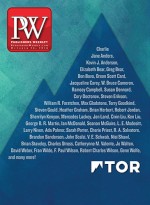Book design may be the most self-effacing form of design anywhere. After all, its mission is to so perfectly smooth the interaction between author and reader that the designer disappears from the equation. If a book is readable, enjoyable, easy to interact with, and seamlessly communicates the ideas of the author, I would say the design is a success because nobody notices it.
Although books are simply words on paper, there are many decisions you’ll make when you create books, especially print books. Some of these decisions come from your marketing plan, some from the constraints of the book manufacturing process, and some from longstanding conventions that readers, perhaps unconsciously, are familiar with and that they look for to assure themselves that the book in question is properly put together.
There are four distinct paths that self-published authors can travel to get their books ready for the readers who are eagerly awaiting them. I’ll get to those in a moment, but first a word about book covers. Your book cover is the most important design element of your book from the point of view of sales, author “branding,” and visibility in the marketplace.
Among book publishing professionals, there’s no argument about cover design: if you are not a book cover designer or someone with a lot of graphic design experience, hire a professional to design your book cover.
Book Interior Requirements
What exactly are we looking for from a book interior? I’ve identified seven distinct goals that your design should aim for. Although some of these items pertain more to nonfiction books than fiction, they are all important. Your book should:
1. Be easy to read;
2. Conform to accepted industry standards;
3. Employ user-friendly navigation such as page numbers, running heads, and subheads;
4. Demonstrate the “hierarchy of knowledge” within the book, showing clearly how different sections relate to each other;
5. Provide easy access to resources such as chapter summaries, bibliographies, and glossaries;
6. Accommodate elements such as sidebars, pull quotes, charts, and extracts;
7. Meet the production requirements of your vendor.
Getting a Book Design to Meet Your Needs
How can self-published authors meet those requirements? Let’s look at those four paths that I mentioned:
1. Do it yourself: Many writers come into self-publishing thinking that they need to do every part of the process, but of course that’s not accurate, and it’s not an efficient way to produce books. On the other hand, many authors today are using Microsoft Word and other programs to lay their books out. You’ll need fonts, reference books, and some good models to follow. You’ll also need a fair amount of time for research. This approach works best if your book is fairly simple from a formatting perspective, like a novel or a memoir.
2. Hire a professional book designer: Hiring a book designer is a great solution for many authors because many designers will also help with your e-books, your website, other marketing materials, and dealing with printers. In some cases, you’ll really need the help of a designer. For coffee table books that will be printed overseas, highly complex formatting challenges, or working with short-run book printers, you’ll be glad to have a designer on your team.
3. Hire a formatter: Recently we’ve seen a lot of people calling themselves “formatters” and offering their services to authors, and that’s a good thing. However, formatters don’t actually design anything: they work from an established layout and simply lay out all the pages. As long as you don’t expect to get design services from a formatter, it can be an economical method of getting a simple book produced.
4. Use a template: Some print and print-on-demand vendors will supply you with a template that shows how your book pages should be constructed. The problem with the templates that I’ve seen is that they are simply wireframes that give you guidelines, but they contain no page design. In the last couple of years, several book designers have started selling completely predesigned, preformatted templates for books. These files, available for Microsoft Word and Adobe InDesign, have become very popular because they solve most of the design problems of self-published authors at a fraction of the cost of hiring a professional.
The aim of book design is to turn your manuscript into an industry-standard book that your readers will love. Whichever path you take, keep that aim in mind and you’ll have the guidance you need to chose the right path for your own books.



 Volume 263
Issue 43
10/24/2016
Volume 263
Issue 43
10/24/2016





